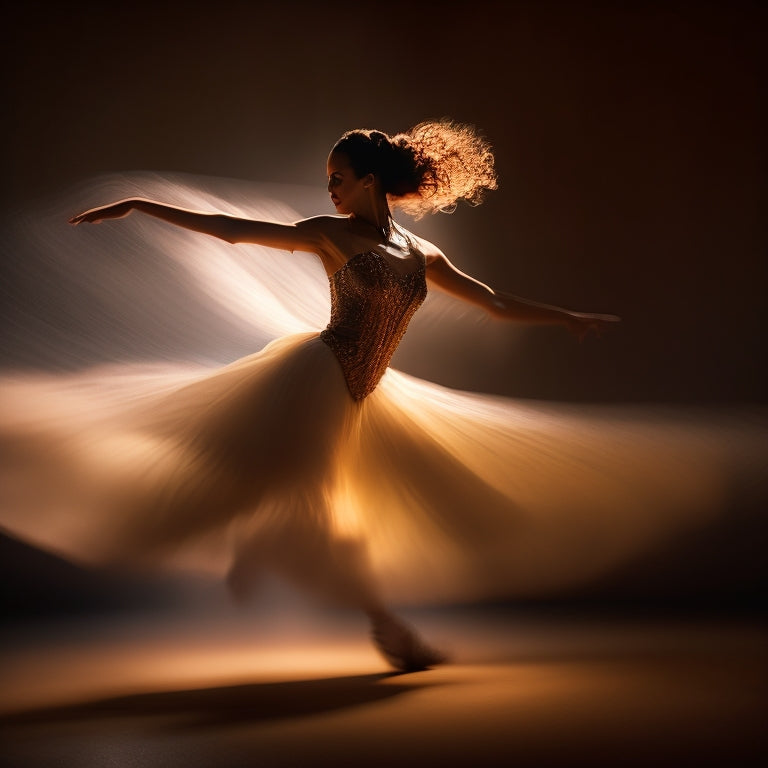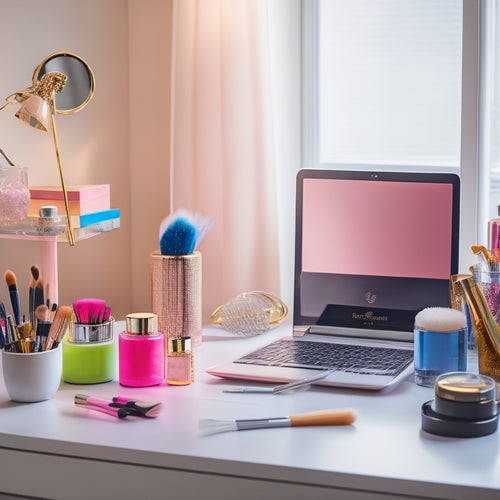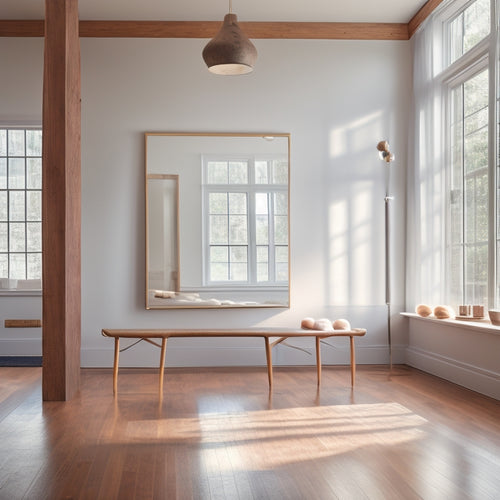
Capturing Movement: Online Course for Photography Enhancement
Share
Did you know that the human brain can process visual information in as little as 13 milliseconds? That's why capturing movement in photography is essential to conveying emotion and energy in your images. You've likely experienced the frustration of trying to freeze a dancer's movements or showcase a dynamic pose, only to end up with a blurry or uninspiring shot. What if you could master the techniques to capture the essence of movement and expression in your photographs? With the right skills and tools, you can create visually striking images that tell a story and evoke emotion - but how do you get started?
Key Takeaways
• Freeze emotion in a single frame to preserve drama and passion by experimenting with shutter speeds, apertures, and ISO settings for varied effects.
• Capture movement and expression to evoke energy and emotion, focusing on creating dynamic portraits that showcase technical skill and emotional investment.
• Experiment with unconventional vantage points and angles, getting low or climbing high to capture dynamic poses and freeze motion in unexpected ways.
• Use natural light control to capture visually stunning images, positioning subjects to avoid harsh shadows and achieve even illumination during the golden hour.
• Convey intensity of music and dynamic poses through photography by emphasizing the cultural significance of costumes, props, and movements.
Mastering Belly Dance Photography Basics
As you step into the world of belly dance photography, mastering the basics is vital to capturing the intricate movements, vibrant costumes, and enchanting expressions that define this mesmerizing art form.
Understanding the cultural sensitivity and historical context of belly dance is necessary to producing respectful and authentic images. This ancient art form has a rich history, originating in the Middle East and North Africa, and has evolved over time through various cultural influences.
When photographing belly dancers, it's important to be mindful of the cultural significance of the costumes, props, and movements. Avoid stereotyping or reducing the dance to mere exoticism. Instead, focus on capturing the dancer's emotions, energy, and techniques.
Be aware of the historical context of the dance, and avoid appropriating or misrepresenting cultural symbols or traditions. By doing so, you'll create photographs that not only showcase the beauty of belly dance but also demonstrate respect and appreciation for the art form.
With sensitivity and knowledge, you'll be well on your way to capturing stunning images that celebrate the essence of belly dance.
Essential Editing Tools for Dance Photos
You'll need a solid grasp of essential editing tools to transform your dance photos from good to great, ensuring that the vibrant colors, dynamic movements, and compelling expressions shine through. As you immerse yourself into editing, it's fundamental to understand the importance of Color Grading. This technique allows you to create a consistent visual tone throughout your collection, setting the mood and atmosphere for your dance photography. By applying a specific color palette, you can evoke emotions and draw the viewer's attention to the dancer's movements.
Another essential tool in your editing arsenal is Batch Processing. This feature enables you to apply edits to multiple images simultaneously, saving you time and effort. With Batch Processing, you can correct exposure, adjust contrast, and refine colors across an entire series of photos, ensuring consistency and cohesion.
Enhancing Movement and Expression
By mastering the art of capturing movement and expression, your dance photography can evoke the energy and emotion of the performance, drawing the viewer's eye to the dancer's dynamic poses and conveying the intensity of the music. You'll learn how to freeze emotion in a single frame, preserving the drama and passion of the dance. This is especially important when capturing fast-paced movements, where a split-second delay can make all the difference.
To take your photography to the next level, focus on creating dynamic portraits that not only showcase the dancer's technical skill but also convey their emotional investment in the performance. This can be achieved by experimenting with different shutter speeds, apertures, and ISO settings to create a sense of blur or freeze the action.
Capturing Dynamic Poses and Angles
To add complexity and visual interest to your dance photography, experiment with unconventional vantage points and angles, getting low or climbing high to capture dynamic poses that convey the dancer's strength, flexibility, and control. You'll be surprised at how a fresh perspective can elevate your shots.
By freezing motion in unexpected ways, you'll create visually striking images that tell a story. Try shooting from the floor, looking up at the dancer, or climbing a ladder to capture a bird's-eye view. This creative vantage will add depth and dimension to your photographs.
Remember to prioritize safety when experimenting with new angles – make sure you're stable and secure, and always be aware of your surroundings.
As you explore different vantage points, pay attention to how the dancer's movements change depending on the angle. You might find that a low-angle shot emphasizes their power, while a high-angle shot highlights their grace.
Working With Lighting and Shadows
As you learn to work with lighting and shadows, you'll discover how to harness natural light to elevate your photographs.
By mastering control over natural light, you'll be able to create stunning images that showcase your subject in the best possible way.
Next, you'll explore how to shape your subject with shadows, adding depth and dimension to your photographs.
Natural Light Control
Mastering natural light control allows you to creatively balance the contrast between bright highlights and dark shadows, adding depth and emotion to your photographs. By understanding how to work with natural light, you can create visually stunning images that draw the viewer's attention.
In the morning, soft focus and warm tones can be achieved by capturing scenes during the golden hour, just after sunrise. This is a great time to shoot portraits, as the soft, warm light creates a flattering and relaxed atmosphere. The morning warmth adds a cozy feel to your photographs, making your subjects look inviting and approachable.
When shooting during this time, be mindful of the direction of the light. Position your subject so that the soft, warm light falls on their face, creating a beautiful, even illumination. Avoid harsh shadows by positioning your subject near a window or outside during this golden hour.
Shaping With Shadows
By learning to work with shadows, you can create depth, dimension, and texture in your photographs, drawing the viewer's eye to specific areas of the image and adding emotional resonance to your storytelling. Shadows can transform your images, making them more engaging and thought-provoking.
Here are some ways to master the art of shaping with shadows:
-
Experiment with Shadow Play:
Use shadows to create abstract compositions or highlight specific elements in your scene. -
Create Silhouette Art:
Shoot against a bright background to create striking silhouettes that add drama to your images. -
Pay Attention to Direction:
Consider the direction of your light source and how it affects the shadows in your scene.
-
Embrace High Contrast:
Don't be afraid to experiment with high contrast scenes, where shadows and highlights work together to create visually striking images.
Retouching and Refining Techniques
Refining your photography skills involves eliminating distractions and accentuating the subject's best features through targeted retouching and refining techniques. You'll learn how to subtly refine your images, creating a more polished and professional look.
Noise reduction is an important step in this process, ensuring that your images are smooth and grain-free. You'll discover how to effectively remove noise without sacrificing detail, resulting in images that are crisp and clear.
When it comes to portraits, skin smoothing is an essential technique to master. You'll learn how to gently soften blemishes and imperfections, creating a natural-looking finish that enhances your subject's features.
Creating Stunning Final Images
With your retouched and refined images in hand, you're now ready to take them to the next level by applying the final touches that will elevate them to stunning works of art. This is where the magic happens, and your images transform into breathtaking masterpieces.
To create truly stunning final images, focus on the following essential elements:
-
Color Grading: Balance and harmony are key. Experiment with color palettes to evoke the desired mood and atmosphere in your image.
-
Storytelling Composition: Guide the viewer's eye through the image, using visual elements to convey the story and emotion you want to convey.
-
Contrast and Saturation: Make selective adjustments to create visual interest and draw attention to the subject.
- Final Tweaks: Make subtle adjustments to brightness, contrast, and sharpness to refine the overall look and feel of the image.
Frequently Asked Questions
Are Camera Settings Provided for Different Types of Dance Photography?
Imagine capturing a dancer's elegant leap, frozen in mid-air. You'll learn how to master shutter speeds and lens options to freeze or blur movement, ensuring you're prepared for any dance photography scenario.
Can I Use a Smartphone Camera for Capturing Dance Movements?
You can use a smartphone camera to capture dance movements, leveraging its capabilities like slo-mo and burst mode. However, be aware of creative constraints like limited low-light performance and potential camera shake, requiring adjustments to your technique.
Do I Need Prior Dance Experience to Take This Photography Course?
You don't need prior dance experience to take this course; your photography passion is what matters. Focus on capturing creative freedom, and let your camera dance with movement, not your body.
Are There Assignments to Practice and Receive Feedback on My Work?
"Don't worry, you won't be stuck in a creative vacuum! You'll receive constructive feedback on your assignments through peer review and mentorship opportunities, helping you refine your skills and style."
Will I Have Lifetime Access to the Course Materials and Updates?
You'll enjoy a Course Guarantee, securing lifetime access to the course materials and updates, ensuring your Digital Rights are protected, and you can revisit lessons whenever you need, with total peace of mind.
Related Posts
-

3 Best Online Tools for Organized Dance Makeup Artists
You need online tools to streamline your workflow and deliver exceptional service to your dance clients. For seamless...
-

What to Look for in a Home Professional Ballet Barre
When choosing a home professional ballet barre, look for durability and solid construction, which guarantees it stand...
-

Newspaper Headline: Access Engaging Social Media Assets Privately
In today's digital landscape, crafting an engaging online presence requires a strategic balance between providing all...


